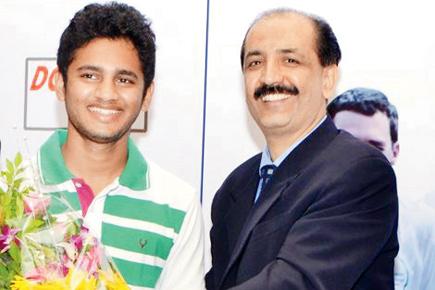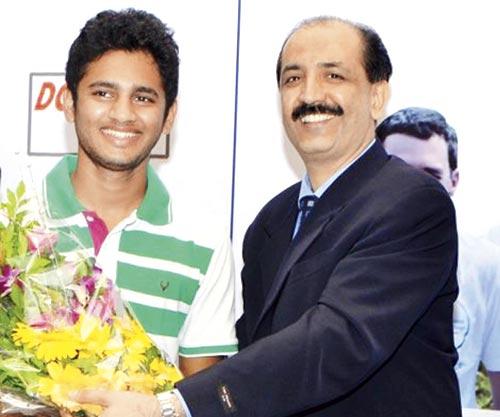Eshaan Shevate, diagnosed with Type-1 diabetes, completed a challenge to scale a mountain peak in Machu Picchu; the disease causes a decrease in glucose available for cells to use for energy

Eshaan Shevate
Determined not to let his condition come in the way of achieving new heights, a Pune boy with Type-1 diabetes successfully scaled a mountain in Peru recently, as a part of an event organised by a pharmaceutical company and the Diabetes Care Research Foundation.
ADVERTISEMENT

Eshaan Shevate credits Dr Abhijit Mutha for helping him cope with the disease and complete the trek to the top of a mountain at Machu Picchu, Peru
19-year-old Eshaan Shevate, along with twelve others who are afflicted by Type-1 diabetes, climbed to the top of a mountain in the Andes range in Machu Picchu, Peru, as a part of the Sanofi and World Diabetes Tour ‘Type 1 Challenge to Machu Picchu’. Other participants were from countries like China, Brazil, USA, Canada, France, Spain and Peru. Shevate was the youngest to come out triumphant in this arduous task.
Pre-teen sufferer
Type-1 diabetes is a condition in which the insulin-producing power of the pancreas is destroyed, as a result of which the glucose level in the blood increases. And, the amount of glucose available to replenish body cells with energy decreases, causing fatigue, weight loss, frequent thirst and urination. Patients have to regularly take doses of insulin injections to maintain normal levels.
Shevate was diagnosed with the disease at the age of twelve. Ever since then, he has had to curb his physical activities.
His mother, Sangeeta, said, “He loves swimming, but can’t swim a lot as it can lead to hypoglycaemia (low blood sugar). He can’t play hockey, since his wounds take time to heal — owing to his condition — and there are chances of getting hurt. There are restrictions on food he can consume, but he is very mature for his age and acts responsibly.”
Recalling the challenges he faced, Shevate pointed out, “At high altitudes, we had to keep high sugar levels since the lack of oxygen reduces sugar in the body.” He said there were chances of having hypoglycaemia that may lead to sweating of hands, blacking out, etc. “We took precautions like carrying sugar-free bars and followed instructions of the doctors who were with us,” he added.
The young boy credits his doctor, Dr Abhay Mutha, consultant diabetologist and president at the Diabetes Care and Research Foundation (DCRF), Pune, for the progress he has made today. The foundation works on increasing awareness in the state about the disease.
Dr Mutha said, “Today, the prime factor lacking around us is awareness. People need to understand that Type-1 diabetes patients require continuous care. We need government support in our endeavour to reach out to a large number of diabetic patients and expand our network to other states by giving scholarships, removing taxes for insulin, removing excise duty for pumps, improving infrastructure and delivery chain, and creating public-private partnerships.”
The engineering student made friends from all over the world on the expedition. They trekked every day for eight hours, managing their condition under tough circumstances. While Pune has availability of insulin strips and equipment, the same cannot be said about rural areas, Shevate said, adding that he would like to help such people who lack medical care.
“People like us require support and not sympathy. Our condition initially looks like a problem, but in reality, it is not a weakness but our strength. We are crazy and manage to do what might not be normally possible.”
 Subscribe today by clicking the link and stay updated with the latest news!" Click here!
Subscribe today by clicking the link and stay updated with the latest news!" Click here!






